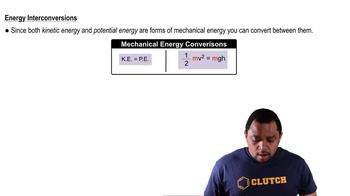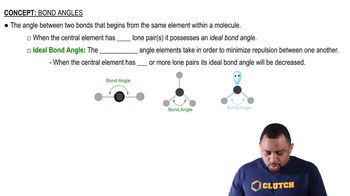For each molecule (a)–(f), indicate how many different electron-domain geometries are consistent with the molecular geometry shown. a.
The following plot shows the potential energy of two Cl atoms as a function of the distance between them. (c) If the Cl2 molecule is compressed under higher and higher pressure, does the Cl–Cl bond become stronger or weaker?

 Verified step by step guidance
Verified step by step guidance
Verified video answer for a similar problem:
Key Concepts
Potential Energy Curve

Bond Strength and Distance

Effect of Pressure on Molecular Bonds

The molecule shown here is difluoromethane 1CH2F22, which is used as a refrigerant called R-32. (c) If the molecule is polar, which of the following describes the direction of the overall dipole moment vector in the molecule: (i) from the carbon atom toward a fluorine atom, (ii) from the carbon atom to a point midway between the fluorine atoms, (iii) from the carbon atom to a point midway between the hydrogen atoms, or (iv) from the carbon atom toward a hydrogen atom?
The orbital diagram that follows presents the final step in the formation of hybrid orbitals by a silicon atom. (a) Which of the following best describes what took place before the step pictured in the diagram: (i) Two 3p electrons became unpaired, (ii) An electron was promoted from the 2p orbital to the 3s orbital, or (iii) An electron was promoted from the 3s orbital to the 3p orbital?
The orbital diagram that follows presents the final step in the formation of hybrid orbitals by a silicon atom. (b) What type of hybrid orbital is produced in this hybridization?
Consider the following hydrocarbon:
a. What is the hybridization at each carbon atom in the molecule?
